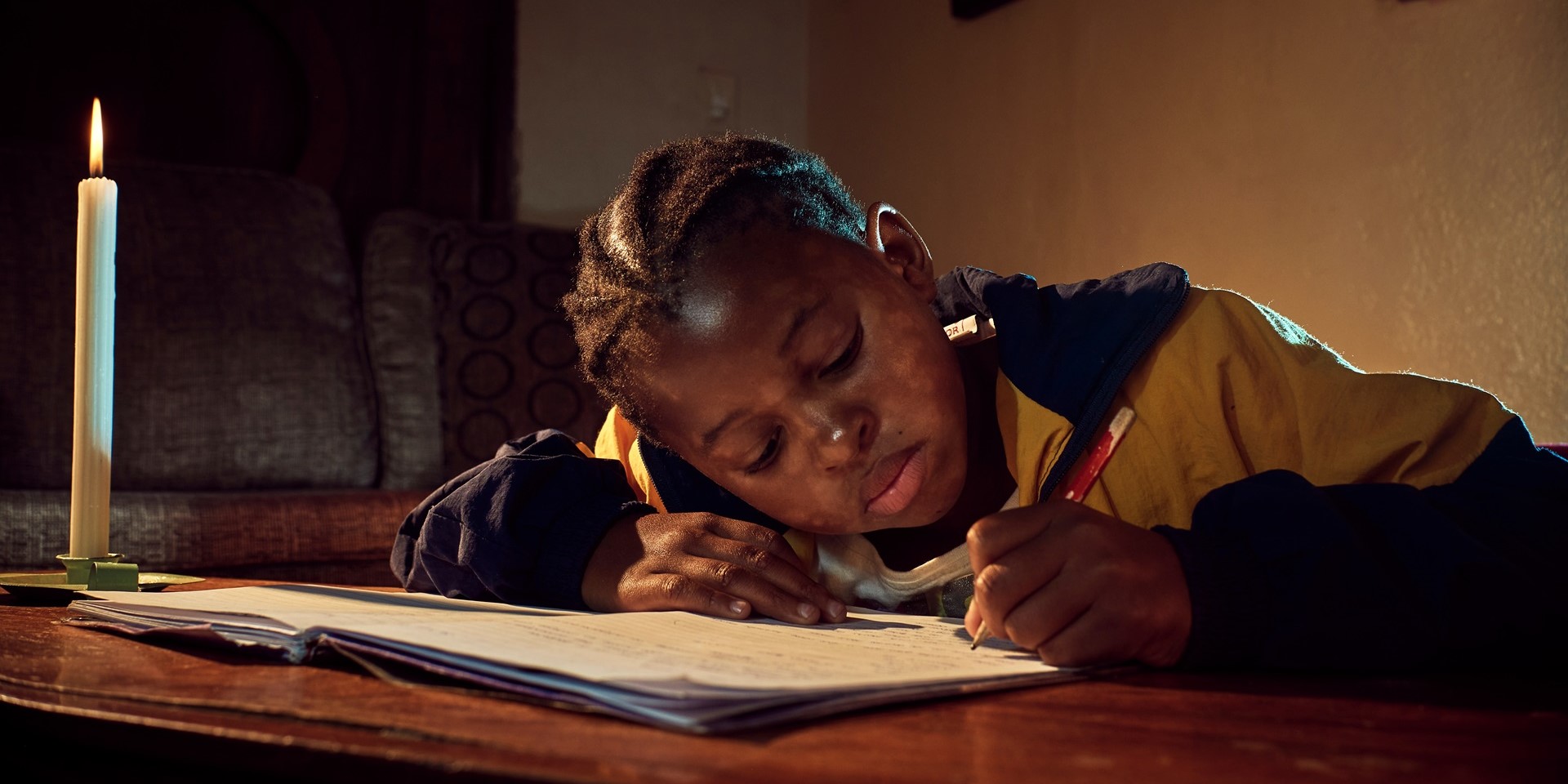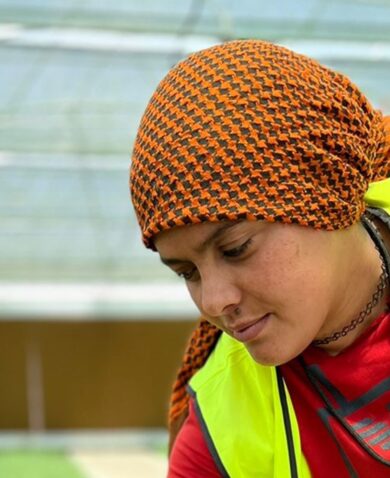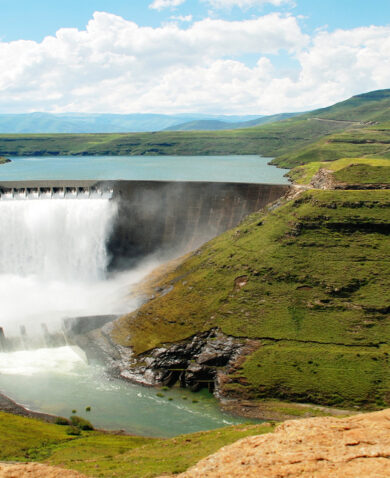Chemonics supports countries in charting a path for energy security and sustainability using evidence-based methods to improve energy sector governance, foster private sector engagement, and accelerate the adoption of innovative technologies. Amer brings close to 20 years of multidisciplinary experience in sustainable development, public and private sector engagement, access to finance, innovation, and market research to his role as Chemonics’ Sustainable Energy Transition Practice Senior Advisor.
1. What drives your motivation to work in the development space, particularly within the context of sustainable energy transitions?
In a way, you could call me a child of development. Having been born in Jordan to Palestinian refugees, I didn’t have the same opportunities that many people would have. Even my vaccinations were sponsored by UNICEF. I went to a low-resourced public school, and through international development organizations, I was able to participate in youth empowerment activities in child rights advocacy and human rights advocacy. I also had plenty of opportunities through various donor-funded programs as an older child and into my teenage years to really be exposed to thinking about development. These early experiences put me on the path to who I have become, and I knew when I got to college that I wanted to work in development to be involved in giving the same kind of integrated support back to other communities.
My interest in the energy sector was initially born out of two turning points. The first was the Arab Spring, and how the situation devolved. That region has a lot of fossil fuel reserves, and it’s an important energy resource globally. I think because of the mismanagement of that resource, and all the politics that come with it, it had a destabilizing effect on the region. That immediately made me think of renewable energy and energy efficiency as a way of countering that dynamic, not only within the region but globally. To lower that pressure on the region’s political economy, we need to make sure that the rest of the world is moving to different kinds of energy resources so that region doesn’t have the same exaggerated strategic value. The second turning point for me was Fukushima, which also happened around the same time. I was living in California, and I remember having to take iodine pills because we were getting some of the radiation from the fallout of that nuclear incident in Japan. That also made me think about the need to figure out how to plan a safer way of meeting our energy needs. Up until then, I had no interest in working in energy, but when I started to get into it, I realized it’s not just about poles and wires. It’s not about large, polluting power plants generating electricity in distant places and delivering it to end users. There’s a lot more space for innovation in the energy sector, whether it’s decentralized energy solutions, renewable energy solutions, off grid solutions, or smart grid technologies. All these are exciting things that promise to make our energy sector more resilient, and better for the climate and the environment.
I like to think of the energy sector facing similar disruptions to the ones faced by the television industry at the turn of the century. Even a short 15 years ago, you had to stay glued to your couch if you wanted to watch a sports game or your favorite TV drama. Then streaming services caused an upheaval by giving consumers more and cheaper options on the go. The television industry tried to resist the change for years, but consumer defection (so-called “cord-cutting”) forced it to adapt the business model. Right now, we have these really old Jurassic utilities in the energy sector, that have this old business model of let’s burn coal or natural gas and generate electricity inefficiently, and then let’s transmit it through expensive transmission infrastructure. But this business model is being revolutionized by innovative solutions like decentralized and renewable energy. I want to be part of that journey.
Of course, I’m also motivated by my children. I don’t want them to look at me in 40 years and ask what I was doing. I want to feel that I did all I could to help. As long as we run on dirty energy, we’ll have a dirty economy.
2. What, in your view, are the major challenges faced by developing countries in their energy transition efforts, and how do you propose to address them?
I think most people are aware of the challenges related to financing, enabling environment, human capacity, availability of technology, foreign exchange issues, and so on. Really, the main challenge, in developing and developed countries alike, is an outdated mindset. It’s having a certain vision for the grid that’s built on the existing model, which is no longer sensible, sustainable, or financially feasible. We have a lot of well-meaning planners, decision-makers, and leaders in the private and public sectors in developing countries that are coming up with solutions that, in my opinion, are not keeping up with advances in technology, with the climate challenge that we have, or with the way that people consume electricity. The first step is saying “Look, you don’t have to keep doing things the way that we’ve been doing them in the West, or you’ve been doing them for the past 50 years, we can actually leapfrog all of that.” We need to start planning from the bottom up as well, getting communities and consumers involved, and reimagine how energy sectors can operate in the context of developing countries in the 21st century.
If the mindset doesn’t change, we will always have issues with all the other challenges like financing and enabling environments. But if we change the mindset, we may be able to do more with locally available resources, more with locally accessible commercial capital, and much more with modular solutions and investments that will grow over time as opposed to really locking ourselves into these multimillion or multibillion dollar contracts for the next 20 years for electricity that may or may not be delivered to people.
The solution to this is what I like to call “energy democracy.” Turning consumers into prosumers, which is a buzzword, but really boils down to empowering and enabling people, communities, households, and businesses to generate a portion of their electricity, if not all their electricity, and to be able to have alternative options to the dirty, unreliable electricity that’s coming from the grid. It’s about really partnering with people to find out what resources and support they need from us to fulfil their full potential as an energy sector participant, not just a consumer.
3. Looking ahead, what do you perceive as emerging trends or opportunities within the energy sector?
The idea of consumer sovereignty, or energy democracy, that we’ve just touched on is really a key trend and emerging opportunity.
Another is business model transformation, decarbonizing our energy systems as well as our productive economic sectors to mitigate the climate catastrophe, and making our energy systems more resilient to natural as well as manmade problems. The International Energy Agency reported in 2022 that the number of unelectrified households has actually gone up for the first time since they started tracking that in 2013, which is obviously a problem. We were putting all these investments into expanding universal access, and then the COVID-19 crisis hit, wreaking havoc on household incomes and global supply chains. The International Energy Agency estimated that a whopping 75 million households that had recently gained access to electricity were likely to lose the ability to pay for it. We need to be resilient, and make sure that energy sectors deliver power when people actually need it. If you’re sheltering at home during a global pandemic, that’s when you need power the most, not when everything is going well. This really highlights the need for more resilience, and a more adaptable service delivery model.
A third and final emerging trend or opportunity we should consider is all the advances and innovations in technology, whether that’s sensor technology, artificial intelligence, information technology, highly efficient household and industrial appliances, energy storage, and so on. This creates a very interesting technological ecosystem for consumer empowerment. Which takes us right back to changing mindsets and delivering energy democracy.














